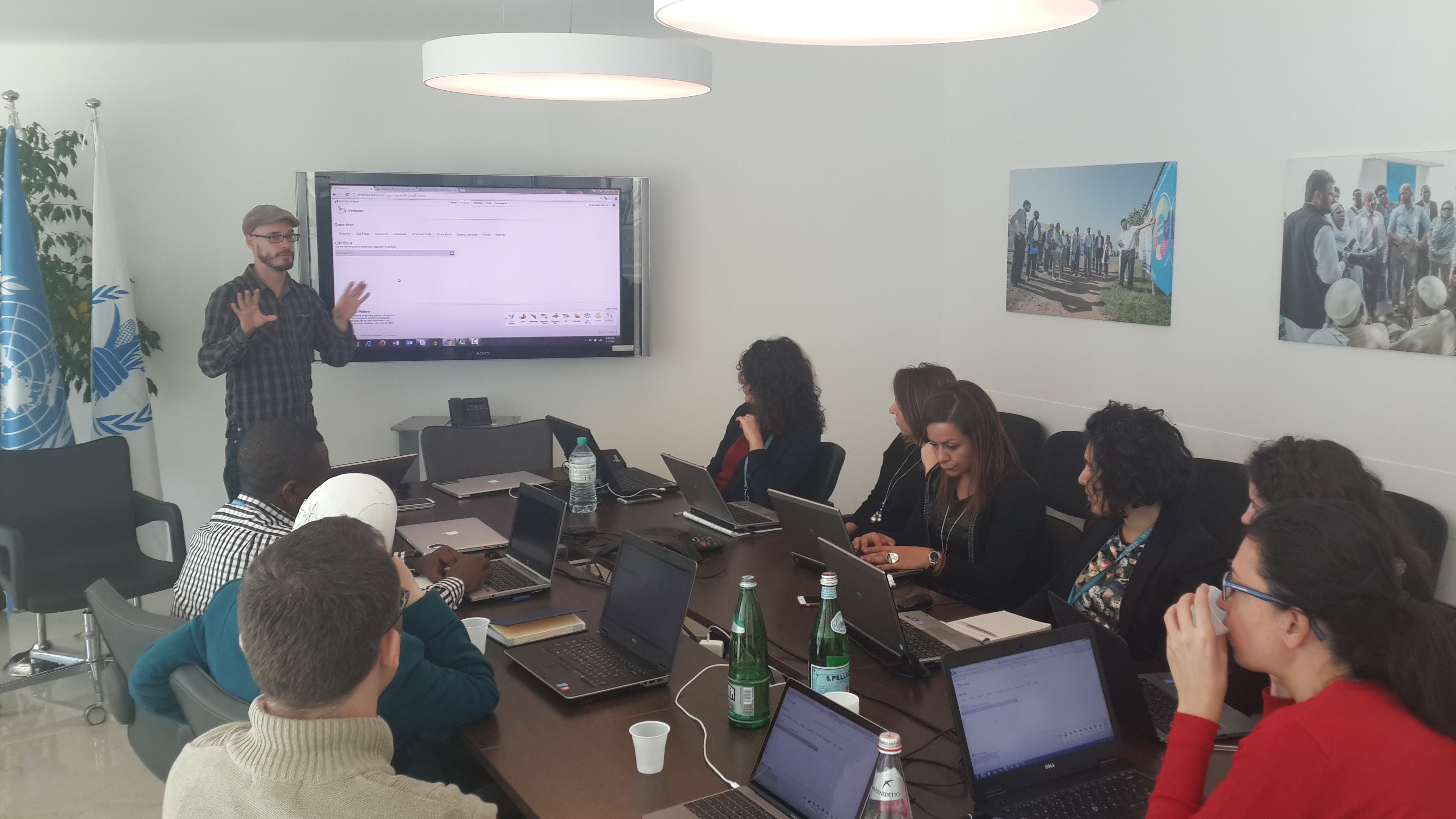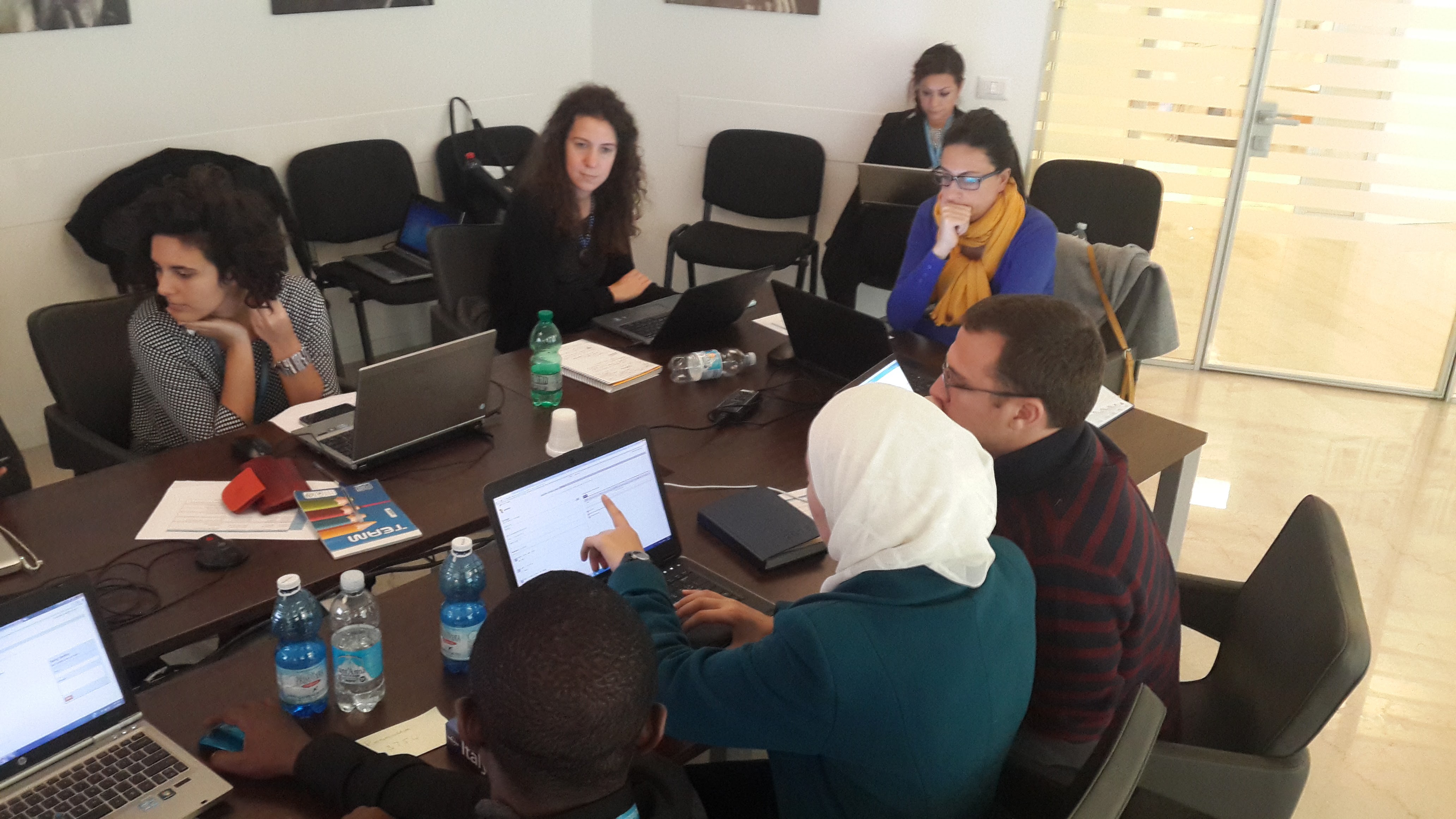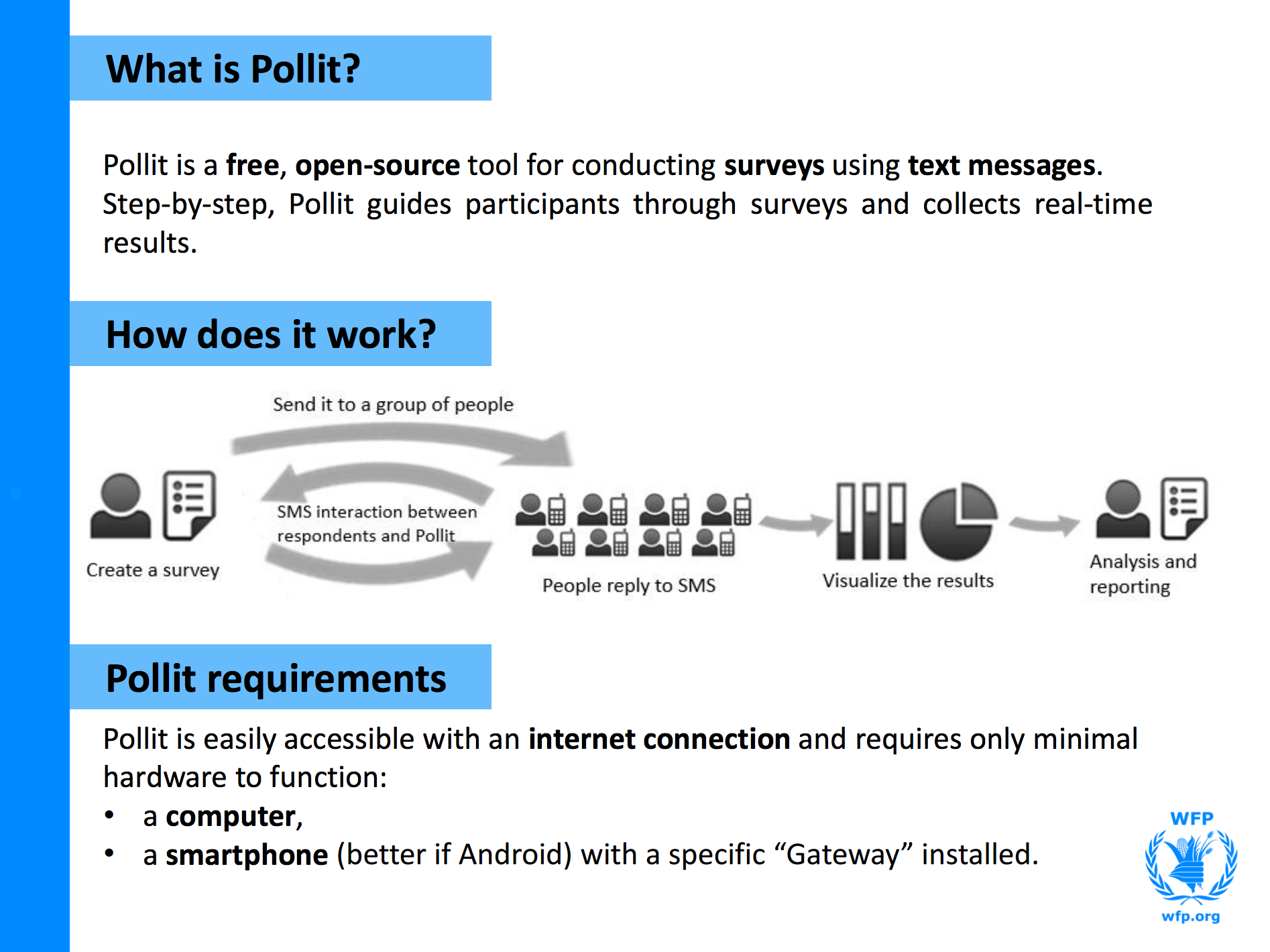During the first days of February, Nicolás and I had the pleasure of being invited to train staff from the mobile Vulnerability Analysis and Mapping (mVAM) project at the World Food Programme (WFP), the food aid arm of the United Nations, on InSTEDD tools in their offices in Rome, in order to cover a number of subjects ranging from basic usage of certain applications to advanced troubleshooting of local installations.
The mVAM project relies on different tools to reach out to the communities, to monitor food prices and food security indicators. From their website:
The mobile Vulnerability Analysis and Mapping (mVAM) project at the World Food Programme is collecting food security data remotely- through short phone surveys, using SMS, live telephone interviews and an Interactive Voice Response (IVR) system. We collect information on local market food prices and household food security indicators (i.e. food consumption, coping strategies).
The collaboration between InSTEDD and the mVAM project of WFP has been going on for quite some time, with deployments of Verboice and Pollit in vulnerable areas of Goma, Democratic Republic of the Congo, and Galkayo, Somalia, to run food security surveys among the population, and provide the community with information on food distribution and prices.
We love to see the tools we build put to such good use, and with their help we have also been able to enhance the existing platforms with additional features, such a call-back option in Verboice for the system to call back the beneficiary so he/she does not have to pay for the call. I strongly encourage you to read more on the wonderful humanitarian work they are doing in their blog.
Now, with plans to expand the program to further locations in the near future, we agreed on setting up a 3-day training to cover from the applications’ basic usage to some quite complex scenarios.
The audience
We had about a dozen attendants from many different sectors, most notably IT specialists, HQ office staff, and field staff, from locations like Congo, Syria, Somalia and Senegal; all of them really eager to participate. The different backgrounds provided different contexts and problems to solve when using the tools, thus creating a most enriching experience not just for the group, but for us as well: watching users working first-hand with the tools we have built always provides an invaluable insight.

Nicolás presenting Verboice
Course contents
After the mandatory introductions, we jumped straight on presenting the tools that have been in use by mVAM, to ensure that everyone had the same base understanding. Day one was really hands-on, with each of the participants following in their own computer and building their own Verboice call flows or Pollit polls.
On day two we started going into more complex Verboice scenarios, including resources internationalisation (which was particularly important for deployments in regions where more than a single language or dialect is spoken), schedules, recurring calls, phone book variables, and calls statuses. By the afternoon we went much more technical, by setting up a local Verboice server from a Virtual Box image and connecting a Voiceblue modem to make and receive calls, emulating the current setup in Somalia and Congo, and going through the troubleshooting of typical scenarios.
On the last day we discussed multiple concepts and requirements associated to connecting with telephone companies and global aggregators for reaching out to a larger number of beneficiaries, where a local modem cannot handle the load. We discussed SMPP and HTTP connections, using shortcodes, securing toll-free numbers, bulk SMS sending, MOs vs MTs, and how all these can help in the scenarios presented by the attendants.

Attendants going through InSTEDD tools
Last but not least, we set up a short demo on Remindem and mBuilder, to add a few more tools to the ones that were being already in use. mBuilder was particularly interesting to some of the attendees, due to its power of being able to actually code triggers and scenarios via simple visual elements.
Side sessions
Besides the course itself, we had some very interesting talks with different people at mVAM and WFP in general. In particular, we had the chance to share our methodologies with several developers from the WFP IT staff, stressing the importance of being extremely agile and embracing constrains in very resource-limited scenarios (as is the typical situation in humanitarian settings), by leveraging the example of designing for emergencies and disasters. The team was great, and asked really interesting questions; we hope to be able to work together in the near future.
Resources
Along with its work on monitoring food indicators, the mVAM team has been compiling an excellent set of resources on the tools they use and how to make the best out of them to achieve their goals. All this material is of public access, and you can find guides on getting started with Verboice and Pollit to run remote surveys, sample questionnaires or instructions on anonymising phone numbers.

Slide from “Introduction to Verboice and Pollit” in mVAM resources
Thanks
We want to thank all the mVAM team, in particular to Lucia Casarin and Jean-Martin Bauer for the invitation and their effort in organising the training, and for the fantastic job they are doing; as well as all the attendees for their participation. We are very excited about all the opportunities for future collaboration with mVAM and the ideas we had the chance to discuss during these days, so stay tuned for more updates.
